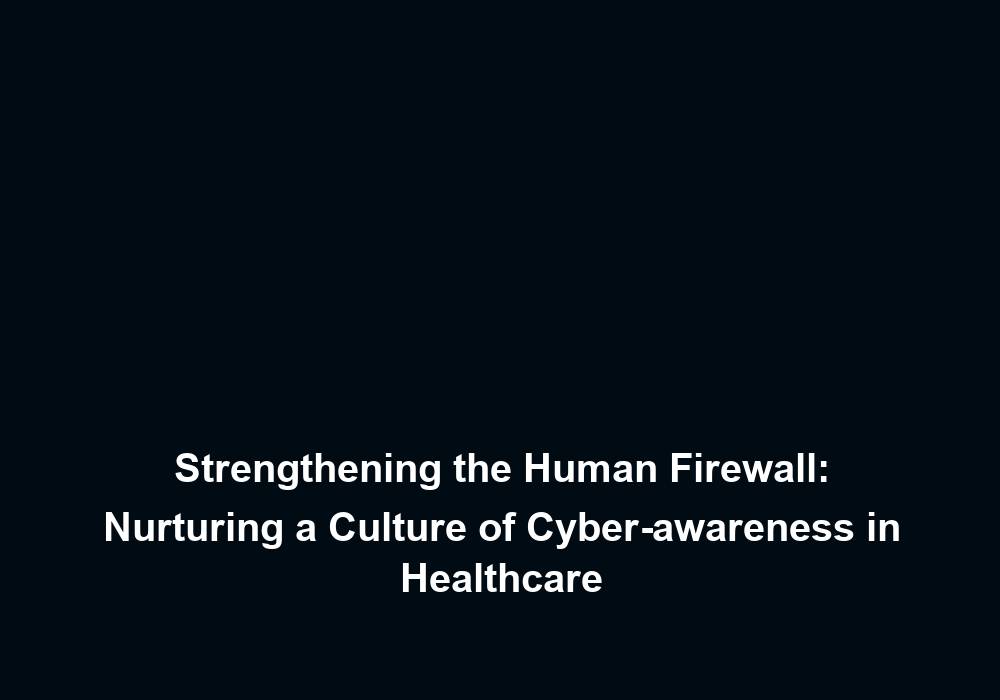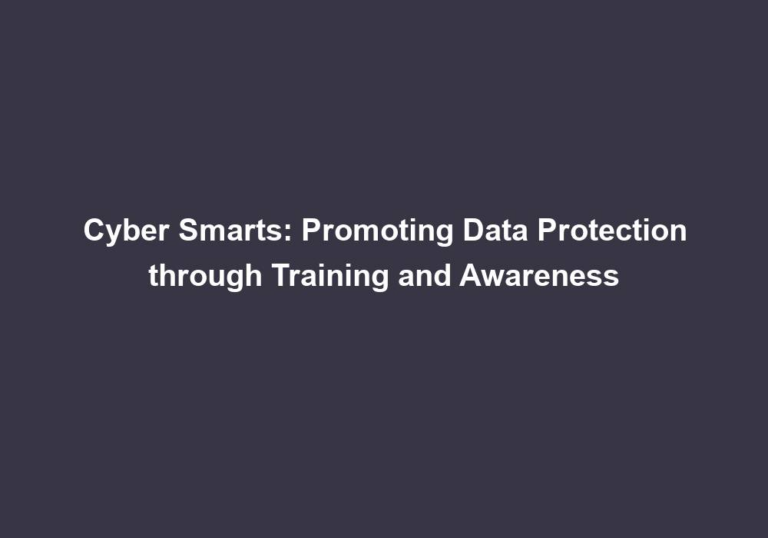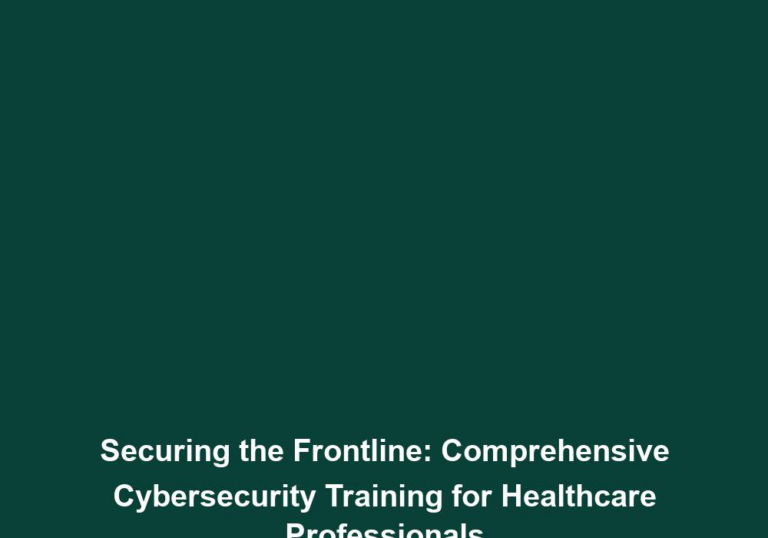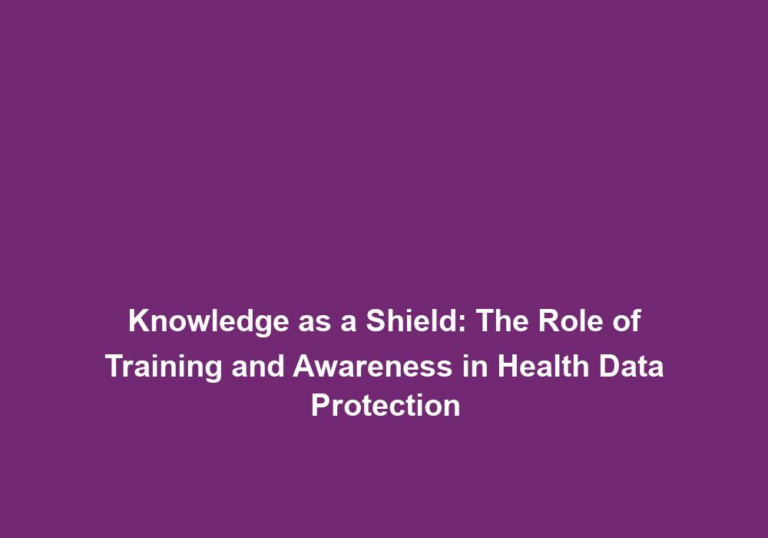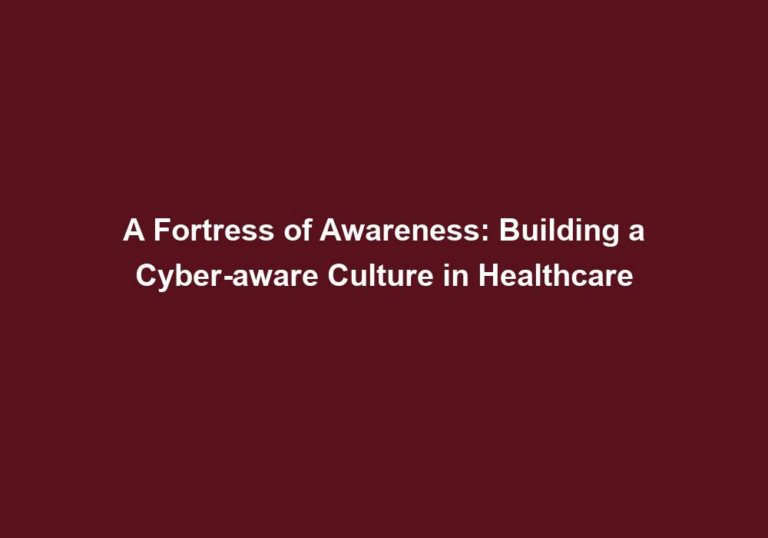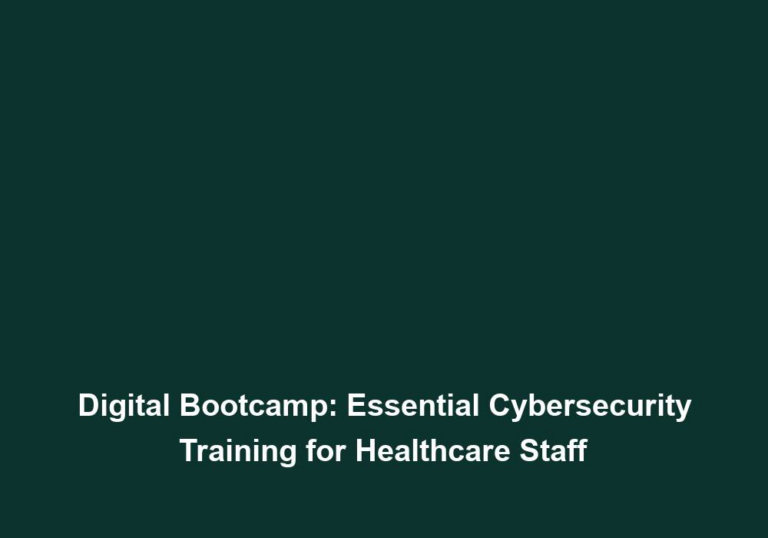Strengthening the Human Firewall: Nurturing a Culture of Cyber-awareness in Healthcare
In today’s digital age, where technology plays a crucial role in healthcare, ensuring the security of sensitive patient information is of utmost importance. The healthcare industry faces numerous cyber threats, making it essential to establish a strong human firewall – a culture of cyber-awareness among healthcare professionals. This article will delve into the significance of nurturing a culture of cyber-awareness in healthcare and explore effective strategies to strengthen the human firewall.
Why is Cyber-Awareness Important in Healthcare?
- Protection of Patient Data: Healthcare organizations handle vast amounts of sensitive patient data, including personal information, medical records, and financial details. Cyber-awareness helps safeguard this data from unauthorized access, ensuring patient privacy and compliance with data protection regulations such as HIPAA (Health Insurance Portability and Accountability Act).
- Implementing strong data protection measures, such as encryption and access controls, helps prevent unauthorized access to patient data.
- Regularly updating security protocols and software patches protects against emerging cyber threats.
- Conducting regular audits and assessments of data security practices ensures ongoing compliance with regulations.
- Prevention of Data Breaches: Cyber-attacks and data breaches pose a significant threat to the healthcare industry. Implementing cybersecurity measures and fostering a culture of cyber-awareness reduces the risk of data breaches, which can result in reputational damage, legal consequences, and financial loss.
- Training healthcare professionals on identifying phishing emails, social engineering tactics, and other common cyber-attack methods helps prevent successful attacks.
- Encouraging the use of strong passwords, multi-factor authentication, and secure communication channels minimizes the risk of unauthorized access.
- Regularly monitoring network activity and implementing intrusion detection systems can quickly identify and respond to potential breaches.
- Mitigation of Operational Risks: Healthcare facilities rely on interconnected medical devices and systems for various operations. Cyber-awareness helps identify potential vulnerabilities and mitigate operational risks, ensuring the smooth functioning of critical healthcare infrastructure.
- Regularly updating and patching software and operating systems on medical devices minimizes the risk of exploitation.
- Implementing network segmentation and access controls limits the impact of a potential breach on critical systems.
- Conducting regular vulnerability assessments and penetration testing identifies weaknesses in the network infrastructure and enables proactive risk mitigation.
Strategies for Nurturing Cyber-Awareness in Healthcare
- Comprehensive Training Programs: Implementing regular and comprehensive cybersecurity training programs for all healthcare staff is crucial. These programs should include information about common cyber threats, techniques used by hackers, and best practices to ensure data security. Training sessions should be interactive and engaging, encouraging employees to actively participate and learn.
- Provide real-life examples and case studies to illustrate the impact of cyber-attacks in the healthcare industry.
- Conduct simulated phishing exercises to test employees’ ability to identify and report suspicious emails.
- Offer ongoing training and refresher courses to reinforce cybersecurity knowledge and address emerging threats.
- Promotion of Cyber-Aware Culture: Building a culture of cyber-awareness starts from the top-down. Healthcare leaders should prioritize cybersecurity and set an example by following best practices. Encouraging open communication about cybersecurity concerns and promoting a proactive approach to reporting potential threats helps create a strong human firewall.
- Include cybersecurity as a regular agenda item in leadership meetings to demonstrate its importance.
- Recognize and reward employees who actively contribute to improving cybersecurity practices.
- Foster a collaborative and supportive environment where employees feel comfortable reporting security incidents or potential vulnerabilities.
- Continuous Education and Awareness: Cyber threats evolve rapidly, necessitating continuous education and awareness. Healthcare organizations should provide regular updates on emerging threats and new cybersecurity measures. This ensures that employees stay informed and equipped to handle potential risks effectively.
- Share relevant industry news, research, and best practices through newsletters, intranet portals, or internal communication channels.
- Organize cybersecurity awareness campaigns and events to engage employees and promote ongoing learning.
- Establish channels for employees to ask questions, seek guidance, and report potential security incidents.
- Implementing Strong Password Policies: Passwords are often the first line of defense against cyber-attacks. Healthcare professionals should be educated on creating strong and unique passwords, avoiding common password mistakes, and implementing multi-factor authentication whenever possible. Regular password changes are also recommended.
- Encourage the use of password managers to generate and securely store complex passwords.
- Implement policies that require the use of unique passwords for different systems and accounts.
- Educate employees about the risks of password sharing and the importance of never reusing passwords across platforms.
- Regular Vulnerability Assessments: Conducting regular vulnerability assessments helps identify weaknesses in the healthcare organization’s systems and networks. These assessments should be performed by qualified cybersecurity professionals who can identify vulnerabilities, provide remediation recommendations, and ensure that necessary patches and updates are applied promptly.
- Conduct external and internal vulnerability assessments to assess both external-facing systems and internal network infrastructure.
- Prioritize vulnerabilities based on their severity and potential impact on patient data and critical systems.
- Develop a formal process for tracking and addressing identified vulnerabilities, including timelines for remediation.
- Secure Remote Access: With the increasing adoption of telemedicine and remote working, secure remote access is crucial. Implementing secure virtual private networks (VPNs) and using encrypted communication channels helps protect patient data during remote interactions. Healthcare professionals should be educated on the proper use of remote access tools and the importance of secure connections.
- Provide clear guidelines and policies on remote access, including the use of VPNs and secure Wi-Fi networks.
- Encourage the use of encrypted messaging platforms and secure file transfer methods for remote collaboration.
- Regularly review and update remote access policies to align with evolving security standards and technologies.
- Incident Response Planning: Healthcare organizations should have well-defined incident response plans in place to effectively handle cyber incidents. These plans should include procedures for reporting incidents, isolating affected systems, notifying appropriate stakeholders, and initiating recovery processes. Regular drills and exercises can help test the effectiveness of these plans and identify areas for improvement.
- Establish a dedicated incident response team with clear roles and responsibilities.
- Conduct tabletop exercises and simulated cyber-attack scenarios to assess the organization’s readiness and identify gaps.
- Document lessons learned from past incidents and update the incident response plans accordingly.
- Partnership with Cybersecurity Experts: Collaborating with cybersecurity experts and consultants can provide healthcare organizations with valuable insights and expertise. These experts can help assess the organization’s security posture, recommend appropriate security solutions, and assist in incident response planning and execution.
- Engage external cybersecurity firms to conduct independent security assessments and penetration testing.
- Establish ongoing partnerships with cybersecurity experts to stay updated on the latest threats and mitigation strategies.
- Seek guidance from industry associations and forums to connect with experts and share best practices.
Conclusion
Nurturing a culture of cyber-awareness in healthcare is vital to protect patient data, prevent data breaches, and mitigate operational risks. By implementing comprehensive training programs, promoting a cyber-aware culture, and regularly assessing vulnerabilities, healthcare organizations can strengthen their human firewall. Continuous education, strong password policies, secure remote access, and well-defined incident response plans further enhance cybersecurity readiness. Collaborating with cybersecurity experts adds an extra layer of protection, ensuring the healthcare industry stays resilient against evolving cyber threats. Protecting patient information must remain a top priority in healthcare, and nurturing a culture of cyber-awareness is the key to achieving this goal.

